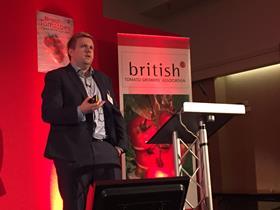
The fact that consumers are buying fruit and veg more frequently, as opposed to retail price deflation, is driving sales in the fresh produce market, according to data analysts.
Shoppers are buying fresh products more often than they did last year, according to the Kantar Worldpanel. The average household purchased wholehead vegetables 78 times a year, wholehead fruit 67 times and prepared fresh products 28 times in the 52 weeks to 14 August.
Simultaneously, there has been a continuation of the well-documented supermarket price war, intensified by the growing market share of discounters Aldi and Lidl, who have caused the major retailers to focus on EDLP in an effort to compete on price. This has led to sales growth across the fruit, vegetables and prepared categories.
But an increase in the frequency of purchase is now the main driver in fresh produce sales, according to Kantar’s Chris Cowan.
“Last year veg was struggling, it was having a torrid time,” said Cowan at the Great British Tomato Conference on 29 September. “Price was the key driver in this and over a third of a billion pounds was taken out of the produce market simply by lowering prices.
“But in the last year, price is no longer the thing that has been driving the produce market – it’s frequency. It’s not people suddenly eating a lot more fruit and veg – it’s subtle changes that have helped drive both the veg and fruit markets.”
One of the highest-frequency markets is tomatoes, for which purchase frequency has risen by three per cent in the past year. This has helped drive growth in tomato sales, which have risen by 2.4 per cent in the past twelve months to £715 million.
Accounting for 27 per cent of volume sales in the category, vine tomatoes are the most important variety, but by far the biggest sales growth has been seen in mixed tomatoes, whose value sales have more than doubled.
Tomato grower Roly Holt believes this rapid growth has been driven by a diversification of consumer demand in the tomato category. “Different customers want different varieties and by having a mixture you can attract different shoppers,” he said. “Speciality and vine tomatoes are definitely the way forward.”
When it comes to revenues, marketing and product awareness have played an important role. Although “it’s very hard to prove cause and effect”, according to Cowan, this year’s British Tomato Week appears to have had boosted consumer penetration.
Some 700,000 or so extra households purchased tomatoes during the awareness week, which took place between 16 and 22 May, featuring recipe suggestions and ‘Tomato Days’ at schools, clubs and garden centres.



